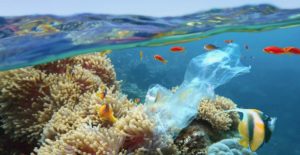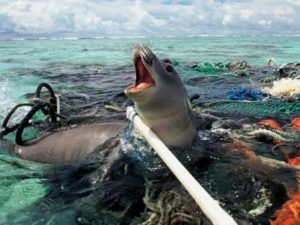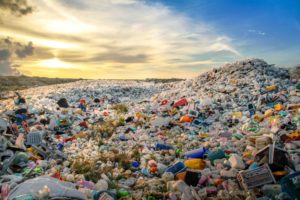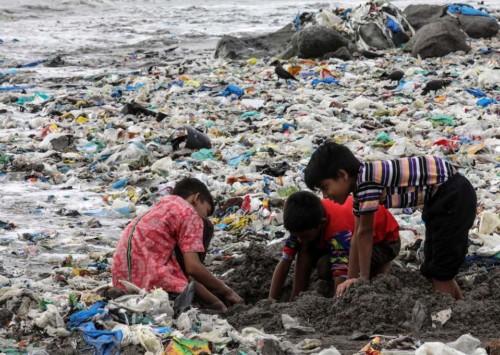Diving into an ocean of plastics

Reports suggest that if the current rate of plastic pollution prevails, by 2050, there will be more plastic in the oceans than fish
Each year, the dumping of large amounts of plastics in the ocean wreaks havoc on marine life. According to reports, the Indian Ocean is one of the biggest dumping grounds of plastic, thereby, experiencing the loss of its rich flora and fauna at an alarming rate. World Oceans Day is celebrated each year on June 8 to recognise the importance of oceans and find out solutions in preserving this resource. This year the theme is Gender and the Ocean, which urges to promote gender equality in ocean-related activities.
A gorgeous shoal of fish donning red and white stripes, a fascinating labyrinth of marine creatures posing as colourful tubes, a swarm of seemingly inanimate aquatics, turtles lazying around, proudly carrying the spirit of Hakuna Matata, pristine water all around and an unpredictable abyss full of possibilities – all this is history now. Oceans, that were once a repository of clear waters playing home to a wide array of fascinating flora and fauna, are now reduced to a large reservoir of plastics, the greatest threat to oceans, marine life and, inevitably, us.
Each year, a scary amount of eight million metric tonnes of plastics leaks into the oceans, killing more than a million marine creatures. These dumped plastics that also pose a threat to humanity, do not hail just from the industries but are part of single-use consumer items such as straws, shoes, caps, balloons, toys, pens, bottles, etc.
Seemingly harmless, dumping is the beginning of a massive challenge- that of plastic pollution. Majority of the plastic, now a part of the oceans, is non-biodegradable. It takes them ages to break into small pieces, let alone degrade or pulverise. For instance, a hammock net alone takes about 600 years to degrade completely.
However, even degradation does not curb the challenge. Even after degrading, the majority of them take the form of micro-plastics. Naked to the eye, these minute plastics are, in turn, consumed by the aquatics, eventually, making their way to the global food chain.
This plastic consumption poses serious threats to the future of marine life. Recently, the pictures of a whale who lost its life to plastic did rounds on social media. Similar ingestion has been documented for at least 233 marine species, including all marine turtle species, more than one-third of seal species, 59 pc of whale species, and 59 pc of seabirds.
What is even more alarming is the rate of dumping, that is increasing by day. One of the studies instituted by the Ellen Macarthur Foundation suggests that if the current rate of plastic pollution prevails, by 2050, there will be more plastic in the oceans than fish.
Plastic wreaking havoc in the Indian Ocean
Reports on the havoc being wreaked due to accumulating plastic in the Indian Ocean make their way to news from time to time. Several of them have confirmed the Indian Ocean to be the largest dumping ground for plastic. One such report instituted in May 2019 revealed that Cocos (Keeling Islands), one of the most beautiful archipelagos of the Indian Ocean, accumulated an estimated amount of 414 million pieces of plastic waste. The beaches of the island are littered with 238 tonnes of plastic, the majority of them being single-use plastic products.
Plastic, thus, has become ubiquitous in the Indian Ocean. According to a report, even the Indian rivers Indus and the Ganges, that is worshipped in the Hindu culture, are the second and sixth highest source of plastic debris making its way to the ocean.
The mystery of missing plastic

Though the biggest dumping ground of plastic waste, scientists are still unsure about the fate of the plastic disposed of in the Indian Ocean
Despite being the largest plastic dumping ground, scientists have not yet been able to figure the fate of the plastic waste dumped in the Indian Ocean. A lack of advanced technology in the sector can be thought of as one of the possible reasons.
Several research programmes have been instituted for finding out the same. One of such recent researches involved the unique method of tracing about 22,000 surface drifting buoys, floating devices, for estimating the distribution of plastic in this majestic water body.
“Our study shows that the atmospheric and oceanic attributes of the Indian Ocean are different from other ocean basins and that there may not be a concentrated garbage patch. Therefore, the mystery of the missing plastic is even greater in the Indian Ocean,” says Mirjam van der Mheen, one of the lead authors in the research.
A possible explanation for the missing plastic is the assumed existence of a leak through which the waste is seeping into the south Atlantic Ocean.
The rising level of plastic waste in the oceans needs to be curbed sooner rather than later. Taking into consideration the cost, time and the lack of adequate technology at the moment for treating the already dissolved plastic waste, immediate steps need to be taken to prevent this disposal. Our oceans are ticking on plastic-bomb!














